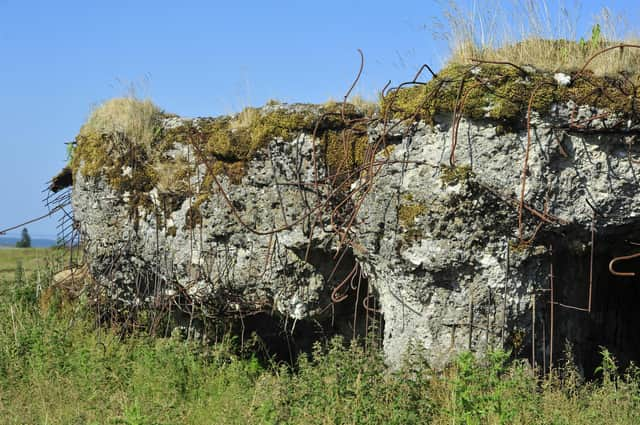The wall deep in the Scottish countryside that helped bring the Nazis down


The replica Atlantic Wall can be found on Sheriffmuir near Dunblane and became a key training ground for Scottish troops in the run up to D-Day landings in June 1944.
Dr Murray Cook, archaeologist at Stirling Council, described the wall as Scotland’s ‘most important archaelogical site’ and one that remains largely unknown.
Advertisement
Hide AdAdvertisement
Hide AdHe said: “While there's still more to learn we do know an awful lot about it. I think its the most important site, as its the main surviving evidence for Scotland's role in D-Day which I think is the most important event in world history, certainly its up there with space travel.”
Sheriffmuir was one of a number of sites chosen by the British Government to build a replica Atlantic Wall which was originally constructed by Germany from concrete between 1942 and 1944 and extended from the northern tip of Norway down to Spain to prevent invasion from British forces.
With the D-Day landings in planning, it became clear that some sort of training in breaching this mighty defence, designed to repel tank attack, would be necessary with the Anti-Concrete Committee then formed.
“The locations were top secret: the men who were contracted to build the structures were taken to the sites in covered vans and had no idea where they were working,” according to a publication by Stirling Council.
Troops arrived to trained at the Sheriffmuir section – the biggest and best preserved - by the early sumer of 1943. Tank assaults followed as well as heavy shelling of the structure.
Shortly afterwards, tragedy struck in early May 1943 when James Miller, 16, a farm servant from Blairlogie, was killed by a unexploded shell while out for a day bird nesting with friends on Sheriffmuir.
While residents were meant to be informed by the War Ministry of operations at Atlantic Wall, this was not always the case.
Correspondence held in Stirling Council archives shows that a taxi that routinely took children from their homes at Sheriffmuir and Lairhill to their school at Dunblane was narrowly missed by a flying shell on May 21, 1943.
Advertisement
Hide AdAdvertisement
Hide AdAfter some negotiation, the military authorities agreed to suspend shelling between 9 o’clock and 9.30 and 12.30 and 1 o’clock so children could get to school safely.
The wall, which is around three metres high and three metres thick, is a scheduled monument
Dr Cook added: “I think its properly protected but I certainly don't think enough people know about it.”
A message from the Editor:Thank you for reading this story on our website. While I have your attention, I also have an important request to make of you.With the coronavirus lockdown having a major impact on many of our advertisers - and consequently the revenue we receive - we are more reliant than ever on you taking out a digital subscription.Subscribe to scotsman.com and enjoy unlimited access to Scottish news and information online and on our app. With a digital subscription, you can read more than 5 articles, see fewer ads, enjoy faster load times, and get access to exclusive newsletters and content. Visit https://www.scotsman.com/subscriptions now to sign up.
Our journalism costs money and we rely on advertising, print and digital revenues to help to support them. By supporting us, we are able to support you in providing trusted, fact-checked content for this website.
Joy Yates
Editorial Director
--